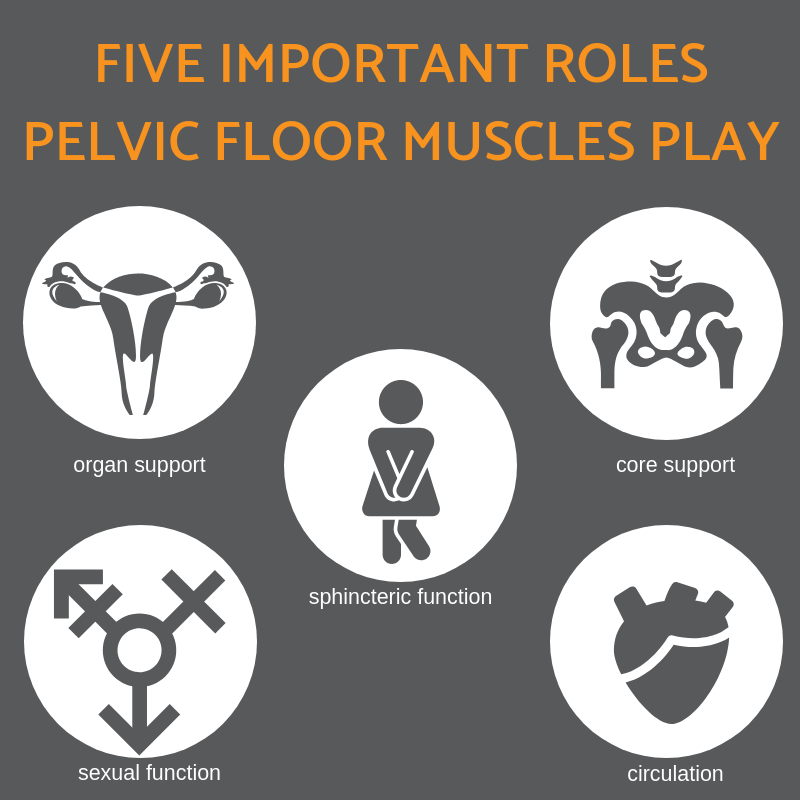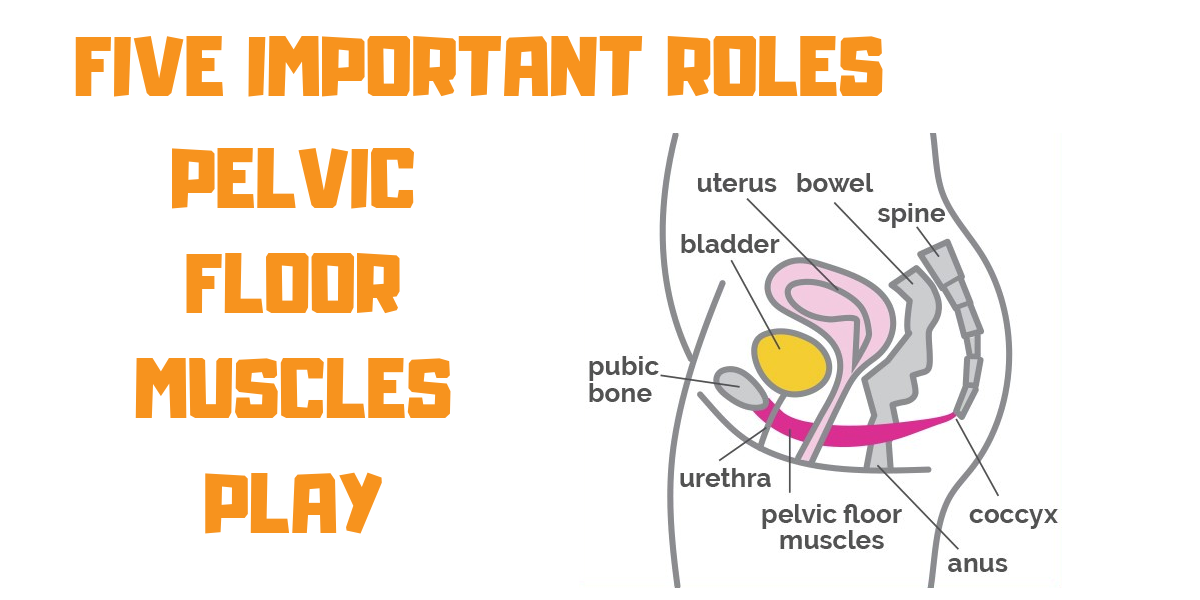The pelvic floor muscles play five important roles in the body:
1. Organ support
The pelvic floor muscles support our bladder, uterus, rectum, and important abdominal organs against gravity and any added downward pressure.
2. Stability
The pelvic floor is one of four muscles making up our inner ‘core’, which stabilizes our pelvis and lower back.
3. Sphincteric function
These are the muscles which control both the opening of the urethra, where urine comes out, and rectum, where feces and/or gas come out. The pelvic floor muscles prevent leakage of urine, feces and gas.
4. Sexual Function
The pelvic floor plays a role in orgasm but can also cause painful intercourse.
5. Circulation
The pelvic floor muscles act as a ‘sump pump’ to pump blood back up towards the heart.
These five important jobs only get done when the pelvic floor muscles are working properly.

How to know if your pelvic floor muscles are working optimally?
Do you ever pee when you cough, or jump or even when you’re making your way to the bathroom? Do you ever have pain with intercourse? Do you feel pelvic heaviness? Or maybe you feel pain in your pelvis with daily movements like getting out of bed, or walking?
If so, you may have pelvic floor dysfunction. The good news is that we, pelvic physiotherapists, have special training that allows us to assess your pelvic floor muscles by doing an external exam and internal vaginal and/or rectal exam.
Pelvic floor physiotherapy, pelvic health physiotherapy or pelvic physiotherapy, as it is also known, is a relatively new concept for most people. You may be thinking, what is this pelvic physiotherapy that people keep talking about? Isn’t that only for women who pee when they do jumping jacks?
Yes, many women who have had children are now familiar with the concept; but they are not the only ones who may benefit from it. Just to clarify, both women and men have pelvic floor muscles. Obviously, the male anatomy is slightly different, but the same muscles exist, and these muscles have the same functions in both men and women.
Pelvic floor physiotherapy is a specialized field of physiotherapy that assesses the pelvic floor muscles for function and the internal organs to see if they are where they should be. A pelvic floor physiotherapist can develop a program to treat or prevent many of the conditions caused by weak or tight muscles.

Where are your pelvic floor muscles?
The pelvic floor is a group of muscles, three layers to be exact, along with tendons, and ligaments that sit at the base of the pelvis. Two of the three layers to the pelvic floor are internal, and so these muscles can only be properly assessed with internal palpation.
The pelvic floor spans from the pubic bone at the front to the tailbone in the back, and side to side between sitz bones. If you aren’t familiar with your sitz bones, they are those hard bones at the underside of your bum. Go ahead, put your hand under one side of your bum and feel for a hard bone!

Get the help you need from a pelvic floor physiotherapist
During your initial visit with our pelvic floor physiotherapist, a detailed history will be taken. You will be asked approximately 50 questions about your bowel and bladder function, previous history, and fluid intake. This in-depth questioning is all to better understand what may play a role in the symptoms you are experiencing.
The external exam may include looking at your breathing pattern, posture, your outer muscles, and the internal exam looks at how well these muscles are functioning, by seeing your ability to contract and then relax these muscles.
A personalized program will then be developed with the goal of optimizing the function of your pelvic floor muscles so that they can support your organs, stabilize your pelvic and lower back, prevent leakage, improve intercourse and pump blood back to your heart.
Contact us to speak to a pelvic floor physiotherapist today.
Written by










